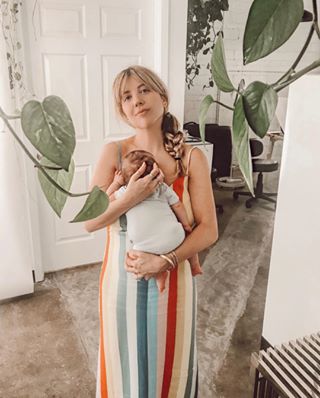As a vegan fashion writer, aligning an appreciation for style with a love for animals has always come naturally. The trickiest part of my job, however, is finding beautiful, animal-friendly clothing that is also eco-friendly AND made ethically in regards to factory conditions and wages. This is a challenge, yes, but a worthwhile and rewarding one. Aligning all of these core values takes extra effort but is NOT impossible, especially if you just give yourself permission take it one step at a time. Today, we are going to start the process by quickly addressing which vegan materials are eco-friendly— soon, we will also tackle the big picture of ethics together! We can do this!

(Wearing an eco-friendly dress by transparent brand Reformation )
Let’s go ahead and state the obvious: when shopping for vegan fashion, one’s initial reaction is “hey this isn’t that hard!” Throw a rock, and it will hit any cheapie store selling clothing that doesn’t list any animal byproducts on the labels. It is important to realize, though, that some of these materials are actually causing major devastation to our animals and the planet we all share and love. Water pollution, emissions, and little plastic microfibers which come off in the washing machine and end up in our oceans (and in our fish) are a few factors to consider when choosing fabrics to invest in. Let’s break it down:
The Earth-Friendly Five
- Buying recycled/vintage/second hand pieces is always best! Aside from not contributing to rising demand for new clothing to be produced, you are also keeping discarded clothing from going straight to a landfill.
- Organic cotton. This is different from regular cotton, because no earth-harming pesticides or GMOs are used in production. (Regular cotton is very pesticide-heavy, which pollutes our oceans.)
- Bamboo. It is one of the most sustainable materials available to us, deriving from a grass requiring no fertilizer or pesticides. It is very soft and moisture-wicking, perfect for sheets, towels, baby clothing, and more.
- Hemp. This is a high yield crop, also grown without a need for fertilizer or pesticides. It improves soil quality, and is durable and strong as a fabric, which leads to a long wear-time.
- Linen. Made from the (entire) flax plant, this is a zero-waste material that requires very little energy/water/resources to produce on a large scale. Linen is recyclable and and biodegradable, plus it is super hardy so you can wear the same garment for decades.
The Fearful Four
- Polyester
- Acrylic
- Rayon
- Nylon
While readily available, the chemicals used in the making of these products—plus the chemical waste— is not a great thing for the environment. They are not recyclable or biodegradable. The production of fabrics like polyester require petroleum, a non-renewable resource. Not to mention, these fabrics are known to contain and be treated with harmful, possibly-carcinogenic chemicals.
One thing to remember is that most of this is not black and white. Organic cotton, for instance, while clearly the “clean” option, requires an excessive amount of water to be used in production. So, like most things in life, you do a cost-benefit analysis and buy mindfully, doing the best the you can. Remember to be kind to yourself– you care and are learning, and that is by far the most crucial step in becoming an ethical, conscious consumer.
